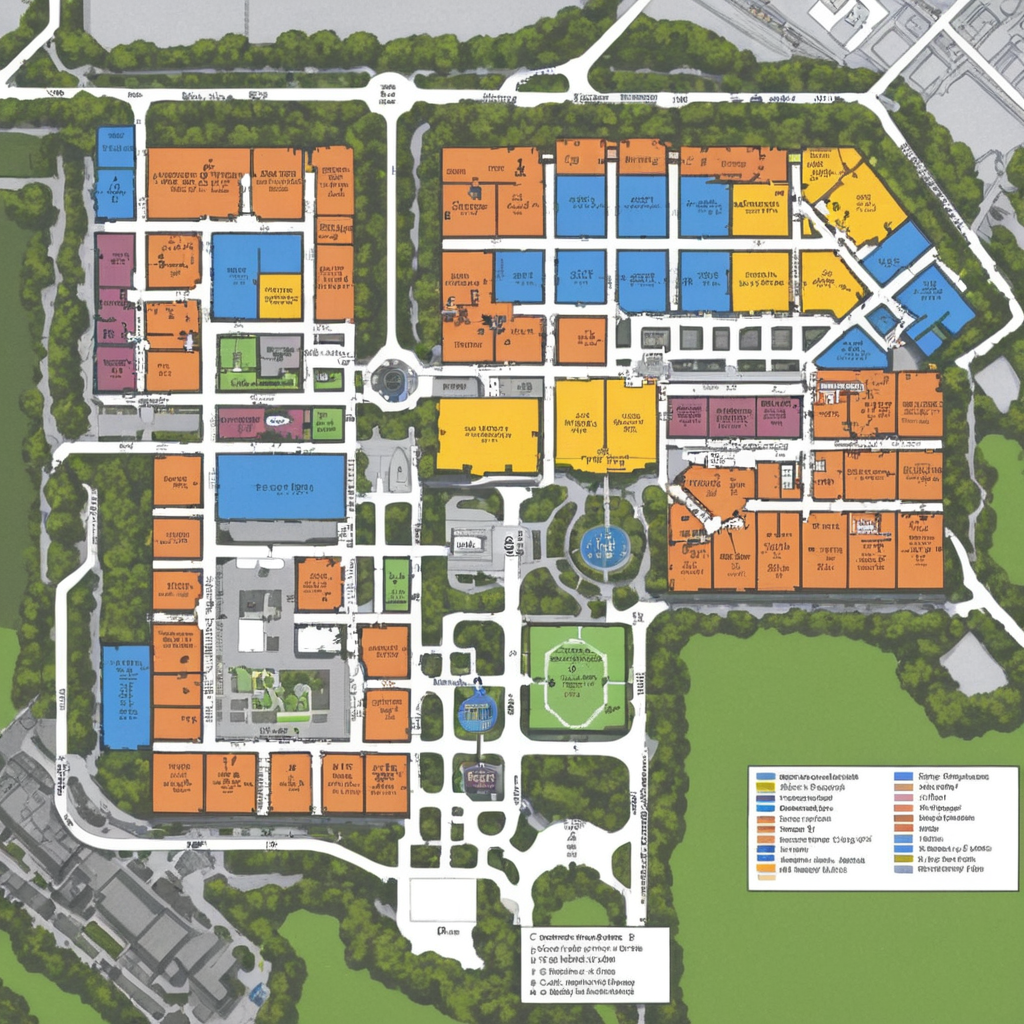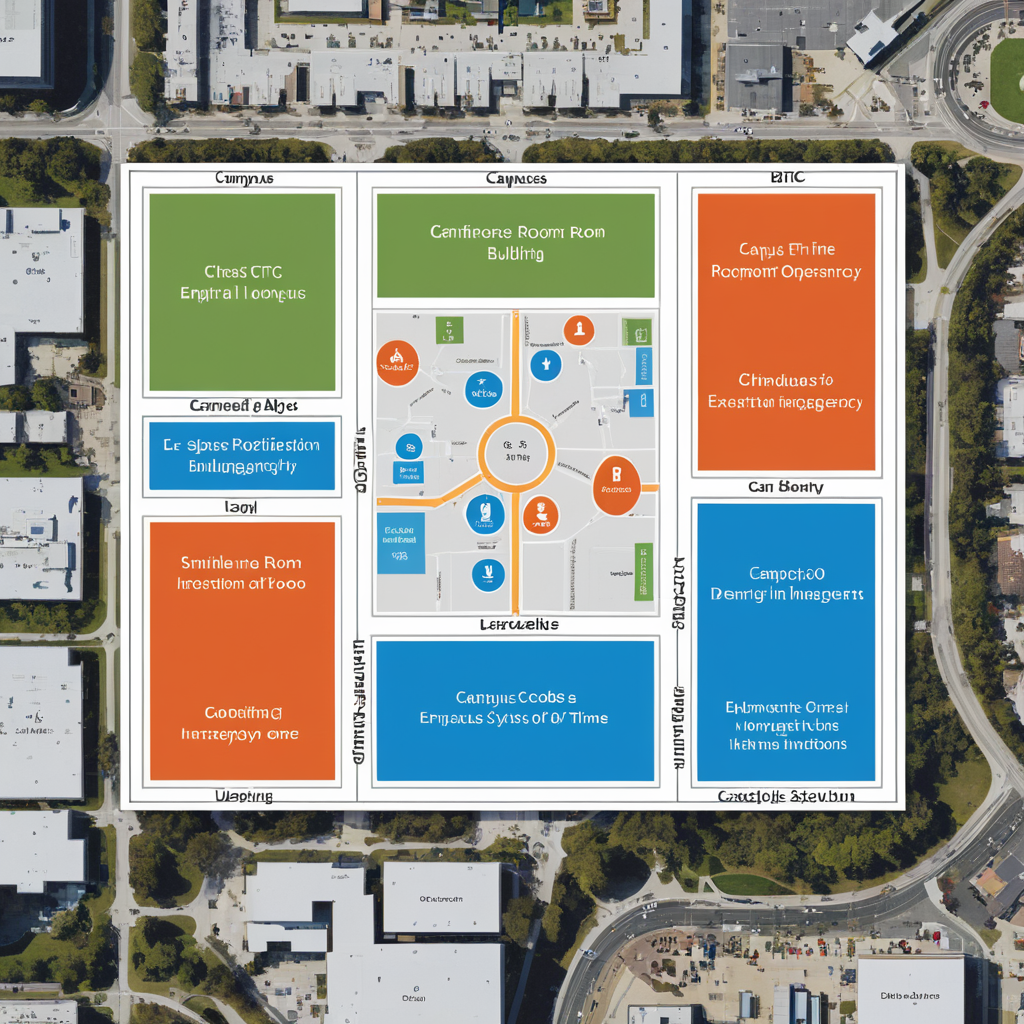- November 6, 2024
Campus Maps and Room Codes: Understanding “E3-106” and Its Importance

Campus Maps and Room Codes: Understanding “E3-106” and Its Importance
Navigating a college campus can be overwhelming, especially at large institutions. In places like Los Angeles Trade Technical College (LATTC), room identifiers like “E3-106” play a crucial role in making the campus layout more manageable for students, staff, and visitors alike. Here’s a deeper look at how this system works and why it’s vital for smooth navigation, safety, and day-to-day operations.

What Does the “E3-106” Designation Refer To in a Campus Map, and How Is It Used to Navigate the Building?
The “E3-106” label is more than just a number; it’s a navigation tool that allows people to pinpoint specific rooms within a campus building. In this case, “E3” likely refers to a particular building (Building E3), while “106” denotes the room or office within that structure. This system is fundamental in ensuring that anyone on campus can easily find their way to classrooms, meeting rooms, or other spaces without confusion. With such a system in place, even newcomers or those unfamiliar with the layout can feel confident navigating the campus.
How Are Building and Room Identifiers Like “E3” in the LATTC Map System Structured, and What Information Can They Convey?
At LATTC, and other similar institutions, room identifiers follow a structured coding system. The “E3” part of the code identifies a particular building, typically organized based on campus geography. For example, “E” could denote the East section of the campus, and “3” could indicate a specific building within that section. The room number (like “106”) tells you the exact room in that building. This system conveys important information like location, building purpose, and even the building’s proximity to other key facilities. It’s an intuitive way to manage a large campus and helps avoid confusion.
How Does LATTC’s Use of Campus Codes Like “E3-106” Contribute to Emergency Response and Safety Protocols?
In times of emergency, clarity is critical. Having room identifiers like “E3-106” on hand allows emergency responders to quickly find the location in question. Whether it’s a fire, medical emergency, or any other crisis, the ability to pinpoint rooms quickly can save valuable time. Additionally, these codes are integrated into emergency evacuation plans, ensuring everyone knows where to go or how to evacuate when the time comes. The use of clear room labels adds an extra layer of safety, making it easier for everyone on campus to respond appropriately.
What Role Does Geolocation Technology Play in Modern Campus Maps, and How Might It Be Implemented in a System That Includes Room Numbers Like “E3-106”?
In today’s tech-savvy world, geolocation technology has revolutionized campus navigation. By using indoor positioning systems (IPS) or GPS technology, students and visitors can use their smartphones or campus apps to get real-time directions to specific rooms, such as “E3-106.” These systems rely on Wi-Fi or Bluetooth beacons to pinpoint an individual’s location and guide them to their destination. For a campus with buildings and room codes like “E3-106,” such technology can be particularly useful in providing accurate and up-to-date guidance, ensuring that no one gets lost, even in large, complex spaces.
What Kind of Mapping Software or Technology Is Typically Used to Design and Update Interactive Campus Maps Like LATTC’s, and How Is Room-Specific Data Integrated?
Modern campus maps are typically created using Geographic Information Systems (GIS) or specialized mapping software. These tools enable the integration of room-specific data, such as “E3-106,” into an interactive map. GIS software allows for the creation of detailed, interactive layouts that include floor plans and room-specific attributes. When a student or staff member clicks on a room identifier like “E3-106,” the map can display additional information, such as class schedules or contact details for the room’s department. These systems are regularly updated to reflect any changes in room assignments or campus renovations.
How Does LATTC Ensure That Its Campus Map System, Including Room Codes Such as “E3-106,” Remains Accurate and User-Friendly for Students and Staff?
To ensure that the campus map stays accurate, LATTC likely relies on a collaborative approach. The facilities management team works closely with IT and academic departments to update room assignments and building layouts. Any changes, whether due to renovations, new buildings, or room reassignments, are quickly reflected on the map. Additionally, feedback from students and staff is regularly collected to identify potential issues and improve usability. Regular audits of the campus map help ensure that it remains user-friendly and up-to-date.
Can a Digital Map With Room Identifiers Like “E3-106” Be Linked to the Building’s Internal Infrastructure, Such as Utilities or Network Systems? If So, How?
Yes, campus maps can be linked to a building’s internal infrastructure, providing valuable insights for facilities management and maintenance teams. By integrating room identifiers like “E3-106” with data about utilities (e.g., electricity, water, HVAC systems) and network connectivity, LATTC could ensure efficient operation and maintenance. For example, if there’s an issue in room “E3-106,” facilities management could use the map to quickly locate the room’s plumbing or electrical connections to diagnose and fix the problem more efficiently.
What Data Formats Are Used for Sharing and Updating Campus Map Information, and How Might the Code “E3-106” Be Represented in These Formats?
Campus maps are often shared in formats like SVG (Scalable Vector Graphics), KML (used for Google Maps integration), or other web-based map formats. Room identifiers like “E3-106” are represented as interactive elements within these formats. For example, a digital map might allow users to click on “E3-106” to reveal more information about the room, such as class schedules or relevant department contacts. These formats ensure that the map can be easily updated, shared, and integrated with other systems across campus.
How Can the Use of Interactive or Printable Campus Maps, Such as the One at LATTC, Be Improved to Better Serve Individuals with Accessibility Needs?
Accessibility is a crucial aspect of any campus map. To better serve individuals with disabilities, interactive and printable maps should include features such as high-contrast visuals, text-to-speech functionality, and compatibility with screen readers. Providing alternative text for images and offering accessible PDFs are also important improvements. For campus maps like LATTC’s, ensuring that information about accessible routes (e.g., elevators, ramps) and rooms (e.g., wheelchair-accessible restrooms) is clearly marked can greatly enhance the experience for users with mobility or vision challenges.
What Kind of Maintenance Protocols Are in Place to Ensure That Room Assignments and Building Codes Like “E3-106” Are Kept Up-to-Date, Particularly When Renovations Occur?
Maintaining accurate room assignments and building codes is essential, particularly when renovations or room reassignments take place. LATTC likely has a set of protocols in place to address this. These may include coordination between the facilities management team, academic departments, and the IT staff to ensure any changes are promptly reflected in the campus map. Regular audits and reviews are likely conducted to ensure that all room codes, such as “E3-106,” are correctly updated. Additionally, staff and students may provide valuable feedback that helps keep the system accurate and functional.
1 Comments
wow! good information.